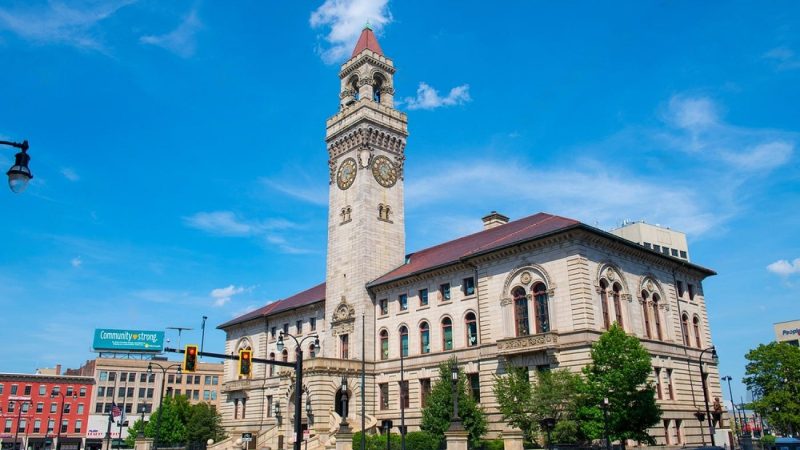Understanding the Impact and Aftermath of the El Paso Shooting: Healing a Community

The El Paso shooting, a tragic event that unfolded on August 3, 2019, left a deep scar on the city and the nation as a whole. The incident took place at a Walmart store in El Paso, Texas, and claimed the lives of 23 people while injuring dozens more. This senseless act of violence shocked the community and sparked a nationwide conversation about gun control, hate crimes, and the importance of unity in the face of adversity.
The El Paso Community:
El Paso, known for its strong sense of community and cultural richness, was profoundly affected by the shooting. The city, which sits on the U.S.-Mexico border, is characterized by its diverse population, blending American and Mexican cultures seamlessly. The attack targeted the very fabric of this harmonious coexistence, as the majority of victims were Latinos, adding an extra layer of pain and anger to the community’s grief.
Immediate Responses:
In the immediate aftermath of the shooting, El Pasoans came together to support one another. Vigils, memorials, and community gatherings were organized to honor the victims and provide solace to the grieving families. The tragedy also prompted a surge in blood donations, with residents eager to contribute in any way possible. The response showcased the resilience and unity that define the spirit of El Paso.
National Reckoning:
The El Paso shooting reignited the national debate on gun control and hate crimes. The shooter’s manifesto, which echoed anti-immigrant sentiments and white supremacist ideologies, raised concerns about the rise of domestic terrorism. Politicians, activists, and citizens across the country called for stricter gun control measures and a collective effort to combat the spread of hate.
Healing Through Unity:
In the face of tragedy, the people of El Paso demonstrated extraordinary strength and solidarity. The “El Paso Strong” mantra became a rallying cry, symbolizing the community’s determination to rise above the darkness that had befallen them. Local artists created murals, and businesses displayed signs bearing the slogan, fostering a sense of unity and resilience.
Community Initiatives:
Numerous initiatives were launched to support the victims and their families. Fundraisers, charity events, and outreach programs sought to provide financial assistance and emotional support to those affected by the shooting. Local nonprofits and community organizations played a crucial role in coordinating these efforts, emphasizing the importance of collective healing.
Impact on Border Relations:
Given El Paso’s unique location on the U.S.-Mexico border, the shooting had a profound impact on cross-border relations. The incident highlighted the interconnectedness of the two communities, with both sides expressing solidarity and condemning the violence. Leaders on both sides of the border emphasized the need for collaboration in addressing the root causes of such atrocities.
Law Enforcement Response:
The El Paso shooting prompted law enforcement agencies to reevaluate their strategies for preventing and responding to mass shootings. Discussions about the role of social media in radicalization, the accessibility of firearms, and the need for improved intelligence-sharing gained prominence. The incident served as a wake-up call for authorities at various levels to enhance their efforts in preventing domestic terrorism.
Long-Term Healing and Resilience:
As time passed, the healing process in El Paso continued. Mental health resources became more accessible, offering support to those grappling with trauma and grief. Educational programs aimed at fostering tolerance and understanding gained momentum, with a focus on dismantling stereotypes and prejudices that could contribute to future acts of violence.
Conclusion:
The El Paso shooting remains a tragic chapter in the city’s history, but the response from the community exemplifies the resilience and strength that can emerge from adversity. The incident sparked important conversations on a national scale, leading to increased awareness of the issues surrounding gun control, hate crimes, and domestic terrorism. While the scars of August 3, 2019, will always be present, El Paso continues to rebuild and stand united, proving that even in the face of darkness, the light of community and compassion can prevail.
-
What happened during the El Paso shooting?
- The El Paso shooting occurred on August 3, 2019, when a lone gunman entered a Walmart store in El Paso, Texas, and opened fire. The attack resulted in 23 fatalities and numerous injuries.
-
Who was the perpetrator, and what was the motive behind the shooting?
- The shooter, identified as Patrick Crusius, expressed anti-immigrant and white supremacist sentiments in a manifesto posted online before the attack. The motive appeared to be rooted in xenophobia and racist ideologies.
-
How did the community of El Paso respond to the shooting?
- The community of El Paso responded with resilience and unity. Vigils, memorials, and community gatherings were organized to honor the victims. The “El Paso Strong” mantra became a symbol of solidarity, and various initiatives were launched to support the victims and their families.
-
What was the demographic impact of the shooting on the victims?
- The majority of the victims were Latinos, reflecting the diverse population of El Paso. This added an additional layer of pain and anger to the community, as the attack targeted a group that forms an integral part of the city’s cultural fabric.
-
Did the El Paso shooting have broader implications for U.S. border relations?
- Yes, the shooting had an impact on U.S.-Mexico border relations. The incident highlighted the interconnectedness of communities on both sides of the border, leading to expressions of solidarity and a renewed emphasis on collaboration in addressing shared challenges.
-
What were the immediate responses from law enforcement and political leaders?
- In the immediate aftermath, there were calls for stricter gun control measures and increased efforts to combat hate crimes. The incident prompted discussions on the role of social media in radicalization and the need for enhanced intelligence-sharing among law enforcement agencies.
-
How did the El Paso shooting contribute to the national debate on gun control?
- The shooting reignited the national debate on gun control, with increased calls for legislative action to address the accessibility of firearms. Advocates and politicians emphasized the urgency of implementing measures to prevent mass shootings and domestic terrorism.
-
What initiatives were undertaken to support the victims and promote healing in the long term?
- Numerous initiatives, including fundraisers, charity events, and outreach programs, were launched to support the victims and their families. Long-term healing efforts focused on improving mental health resources, educational programs, and fostering tolerance to prevent future acts of violence.
-
Were there any changes in law enforcement strategies following the El Paso shooting?
- The shooting prompted law enforcement agencies to reevaluate their strategies for preventing and responding to mass shootings. Discussions included addressing the role of social media in radicalization and improving intelligence-sharing to enhance overall public safety.
-
How is El Paso continuing to heal and rebuild after the shooting?
- El Paso continues to heal through ongoing community initiatives, mental health resources, and educational programs. The city’s commitment to unity, resilience, and dismantling stereotypes has played a crucial role in rebuilding and moving forward.






